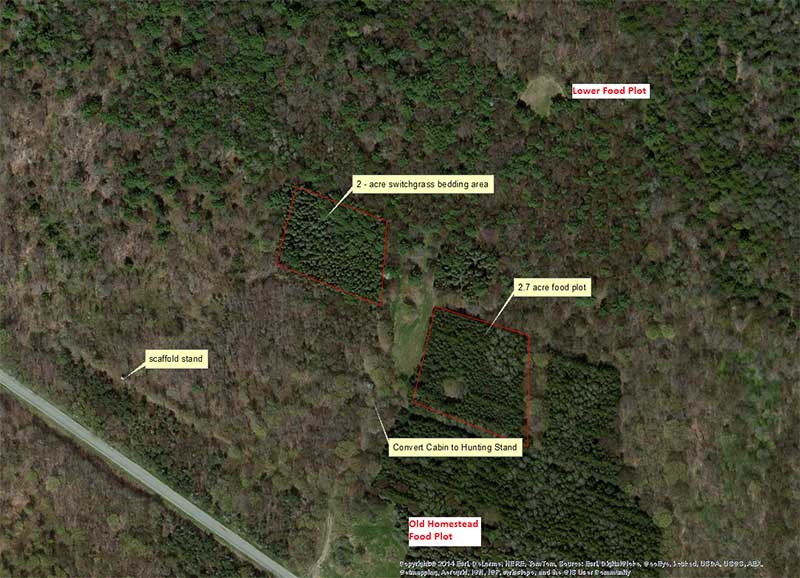Creating a Habitat Plan on a Fifty-Acre Property
 Here is an example on how to plan and implement a habitat plan on a small tract. This property is in a populated region of Pennsylvania with mostly developed land with some swampland and farmland nearby. A seasonal stream runs through the property with some woods along it and old farm fields on the drier and more level sites. The landowner was seeing deer pass through from time to time but they were not staying on the property and opportunities to shoot a good buck did not present themselves in the two years he owned it. This is an exciting project since the property has a nice apple orchard and some very good soils to grow whatever we want.
Here is an example on how to plan and implement a habitat plan on a small tract. This property is in a populated region of Pennsylvania with mostly developed land with some swampland and farmland nearby. A seasonal stream runs through the property with some woods along it and old farm fields on the drier and more level sites. The landowner was seeing deer pass through from time to time but they were not staying on the property and opportunities to shoot a good buck did not present themselves in the two years he owned it. This is an exciting project since the property has a nice apple orchard and some very good soils to grow whatever we want.
My plan is to create bedding and security cover to prevent deer from wanting to leave and seek security in the swamps a mile away and hopefully capture a mature buck that will make this his core area. To accomplish this, we want to provide year-round food and cover. The video was shot at the area labeled “hinge cut locusts” on the map. The dark area in the satellite photo is the deep creekbed with steep sides. The thickened locust stand I worked on will be a great location for doe groups to bed down next the the food sources we will install as soon as the weather dries up. We will put two stands of tall grass, either switchgrass or coastal panic grass where indicated with a cover strip leading from one food source to the other. The north end of the property has about 17 apple trees which we “daylighted” by cutting the overstory trees to open them up to full sunlight. I also dropped several big mature aspens to open up the canopy, provide thick cover and encourage more young aspen to sprout.
This will create more bedding cover and deer can feed on new aspen leaves in early summer. The landowner will be planting some forage around the apple trees as well.
As you can see, we will have 50-acre tract that has year-round forage, water and bedding/escape cover. If this landowner hunts it carefully, there is no reason why he should not have multiple opportunities to shoot bucks as they cruise the downwind sides of the food and cover. We also did some work with sneak trails to encourage deer to enter the apple orchard and food plots where we want them. This way, we can set up to hunt deer that are likely to walk where we want them to and not just passing through the property randomly. The video below shows how I worked on the field edge hinge-cutting locust to create bedding and screening cover near the food source.

